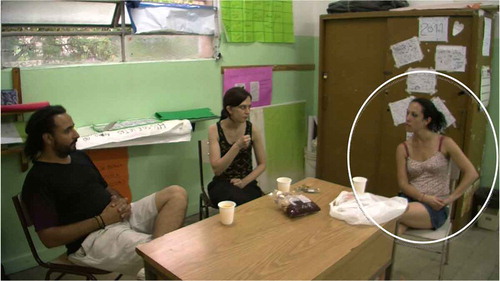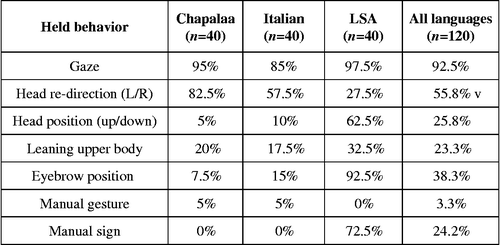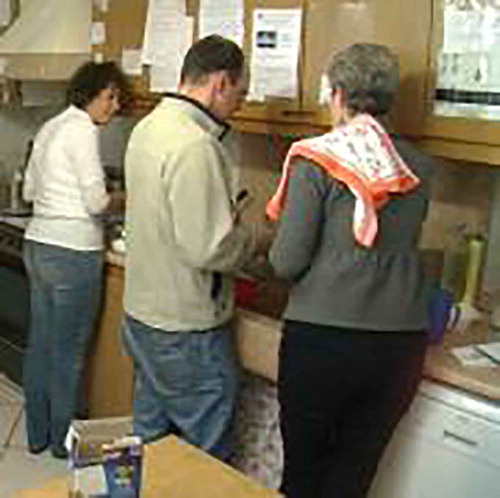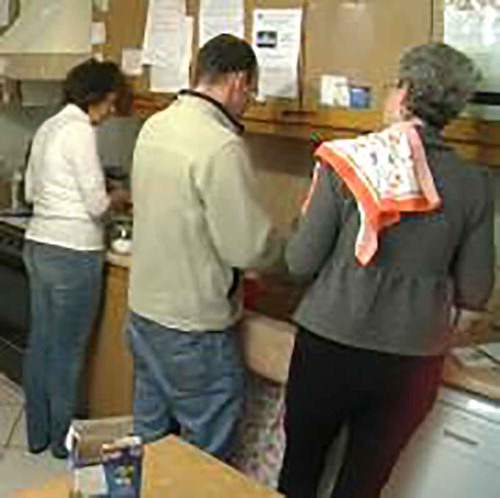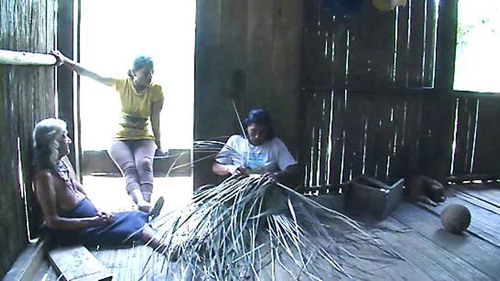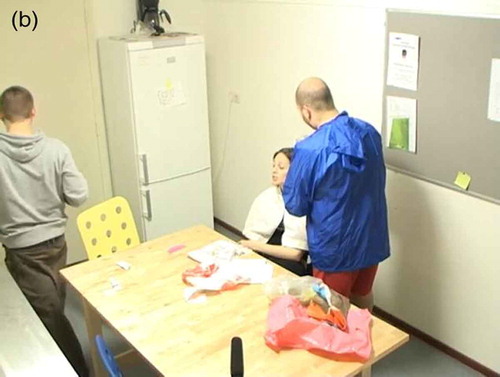Figures & data
Image 1A Speaker A (off camera) asks “How much are washu trees?” Speaker B (on bench, in the middle) begins to turn his head and gaze toward speaker A as he says “huh?” He then holds this position while speaker A repeats “washu trees, how much are they?”
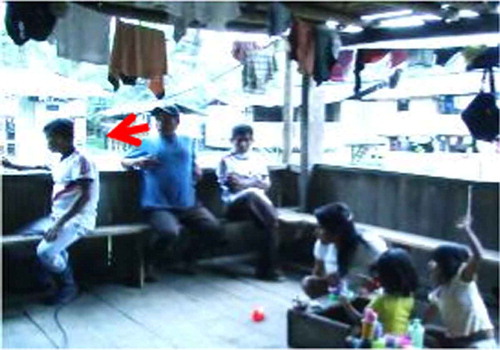
Image 1B Speaker A (off camera) provides a repair solution by repeating “washu trees, how much are they?” As speaker B finishes answering this question, saying “At Wilson's place they are giving just one dollar,” he turns his head and gaze back to their original position.
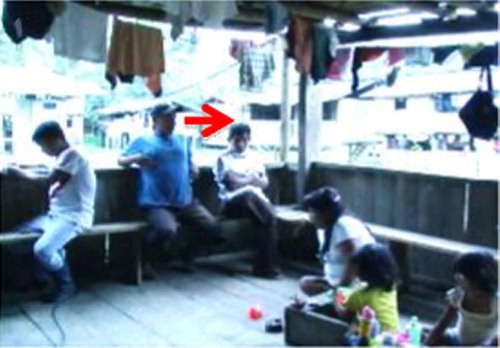
Image 2A “….WHAT…?,” participant B, right, initiates repair in line 4 by using manual (…what?) and nonmanual signs (wrinkled nose, eyebrows together, and upward head tilt.) holding them until participant A solves the sequence.
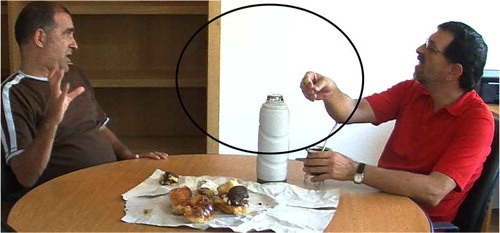
Image 2B ‘…BOTH...’, participant A, on the left, end of the solution turn. “Ah, …both”, participant B, on the right, displays information uptake and confirms the repair solution in line 5 by manual (…both) and nonmanual signs (head down and wide open mouth).
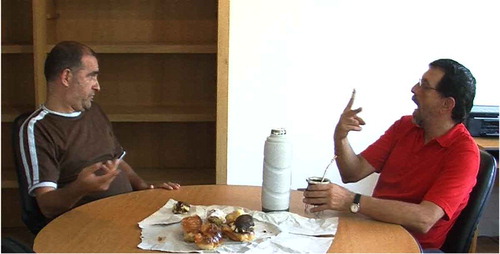
Image 2C Participant A, right, disengages hold position of nonmanuals first, maintaining manual hold position (“WHAT?”).
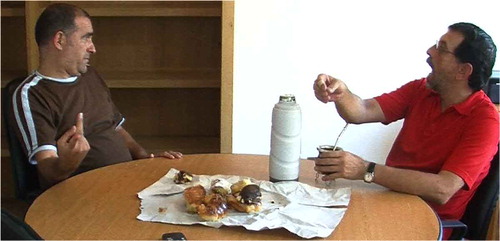
Image 2D Participant A, right, disengages manual sign hold position to provide uptake (line 5). It disengages in second place, after disengaging nonmanuals markers (see image 2C).
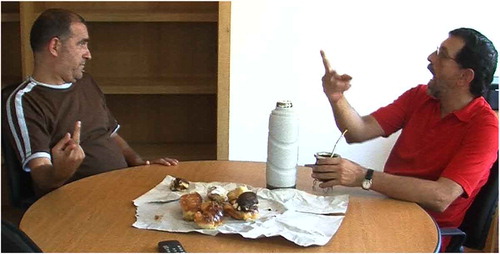
Figure 1 Density plots of the timing of hold ends relative to the start of T+1 in 120 OIR sequences: 40 each from Cha'palaa, Italian, and LSA. [Density plots display the estimated probability density function (y-axis) of a continuous random variable (x-axis) and have a purpose similar to that of histograms. However, whereas histograms group observations into a discrete number of bins, density plots provide a continuous estimate of the distribution of a variable. The density plots shown in this article were computed using the density function in R with default parameter settings (R Development Core Team, 2008).]
![Figure 1 Density plots of the timing of hold ends relative to the start of T+1 in 120 OIR sequences: 40 each from Cha'palaa, Italian, and LSA. [Density plots display the estimated probability density function (y-axis) of a continuous random variable (x-axis) and have a purpose similar to that of histograms. However, whereas histograms group observations into a discrete number of bins, density plots provide a continuous estimate of the distribution of a variable. The density plots shown in this article were computed using the density function in R with default parameter settings (R Development Core Team, 2008).]](/cms/asset/ee109d12-5b5f-4f67-a54a-8c5fa310300c/hdsp_a_992680_f0007_b.gif)
Figure 2 Density plots of the timing of hold ends relative to the start of T+2 for a total of 95 of the 120 total cases; 28 in Cha'palaa, 32 in Italian (with 1 outlier not shown), and 34 in LSA.
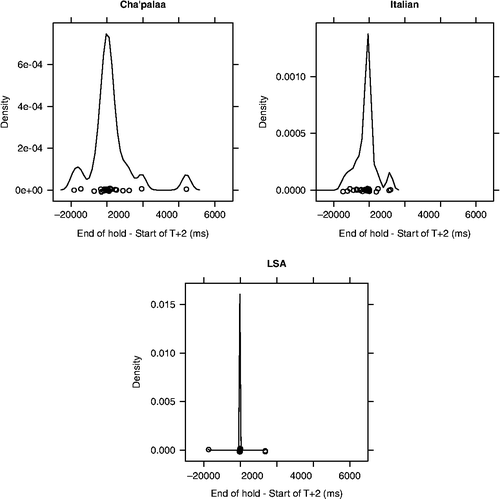
Image 4A ‘WHAT?’, participant B on the right initiates an open repair type by the manual sign ‘WHAT’, bringing her eyebrows together and wrinkling her nose. These linguistic lexical and prosodic components are maintained until participant C, middle, provides a repair solution Extract 4, line 2.
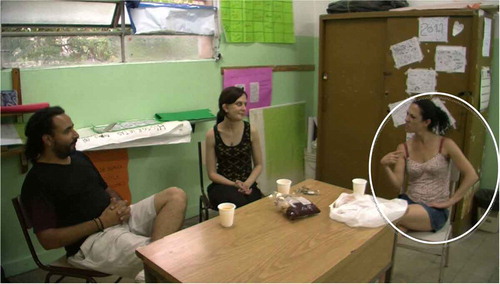
Image 4B ‘WHO?’, participant B, right, upgrades her repair initiation format to restricted type produced by the manual sign ‘WHO’ combined with eyebrows together, head tilt and mouthing of the Spanish wh-q word in ‘quién’, Extract 4, line 4. All these linguistic components are produced simultaneously.

Image 4C ‘Ah!’, participant B provides uptake by nodding and by releasing her hold posture by lowering her right arm, Extract 4, line 6.
